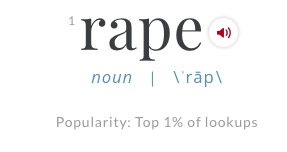One in five women will be sexually assaulted in college. This is the dreadful rape statistic spouted onto incoming college women, usually followed by a hotline number.
But, what these women do not hear is that this statistic is severely swollen and has been debunked repeatedly by law enforcement studies and mathematicians.
The spurious one-in-five ratio has even been renounced by the original study that produced it: a loosely-conducted online survey in which researchers’ expansive definitions of rape muddled figures to include broader sexual assaults and even unwanted kissing. Even still, the one-in-five statistic perpetuates due to its fear factor. Rape crimes still happen, but government statistics deem a national campus “rape crisis” uncommon.
There is no reason to implicate a rape problem of one-in-five proportions at UTSA. The most recent UTSA Police Department annual crime report listed six rapes in 2016. However, rape remains one of the least reported crimes, and experts estimate that reported rape comprises only 10 to 40 percent of total rape rates. Even compensating with this professional estimation, UTSA rape statistics do not place anywhere near the one-in-five assertion.
For example, if 10 percent of UTSA rapes were reported in 2016, one could reasonably estimate another 60 possible unreported rapes that year based on expert analysis. However, estimated annual rape rates at UTSA would have to number at least several hundred to near the one-in-five claim. Such rape rates would easily surpass those of the most violent U.S. cities. Parents would stop sending their daughters to college if this were the case – it simply is not.
There is no reason to suppose that other universities are embroiled in this crisis either. Data from the Bureau of Justice Statistics sheds more light on the issue; their most recent study “Rape and Sexual Assault Among College-Age Females,” used algorithms calculating for professionally-assessed margins of unreported rape, experts calculate the typical rate of rape on college campuses to be between 5.0 and 7.2 per 1,000 people. It may not be zero-in-five, but it is certainly not one-in-five.
While eliminating rape is ideal, the overall downward trend in violent sexual crimes should bring some relief to young college women. According to the Bureau of Justice Statistics’ “Female Victims of Sexual Violence 1994-2010” report, yearly rape rates declined by 58 percent in the measured time span. Campuses are safer than ever, comparatively safer for women than off-campus locations, and speculation of widespread upheaval is largely unsubstantiated.
Though rape crimes still occur, there is no reason to propagate the one-in-five statistic or to suspect a “rape crisis” at UTSA or other college campuses. Government data indicates that rape rates for college females are nowhere near one-in-five, even adjusting for unreported figures. College women deserve to be informed instead of afraid.
Check out the most recent UTSAPD and Texas Department of Public Safety annual crime reports, as well as the National Institute of Justice and Bureau of Justice Statistics sexual violence webpages to stay informed.












